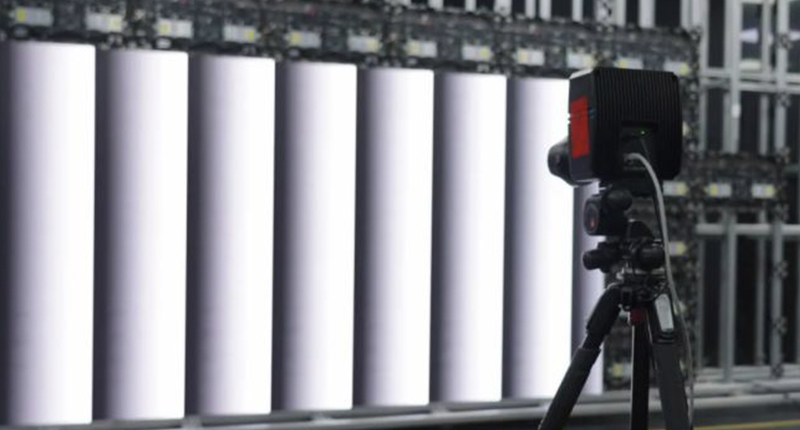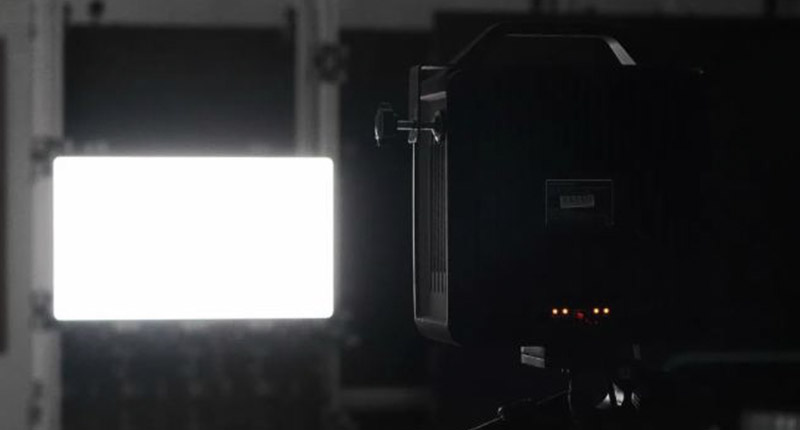Im Bereich der LED-Kleinbild-Displaytechnologie dominiert die Chip-On-Board-Technologie (COB) aufgrund ihrer modularen Struktur, hohen Stabilität und hervorragenden visuellen Effekte schnell den Markt. Diese Technologie hat nicht nur auf dem direkten LED-Markt an Bedeutung gewonnen, sondern beginnt auch, kommerzielle und private Anwendungen zu durchdringen.
Bedeutung von Kalibrierungstechniken
Die Komplexität der Chipmischung und Farbtrennung führt unweigerlich zu Problemen wie ungleichmäßiger Helligkeit und Farbabweichungen zwischen den Modulen. Daher ist der Korrekturprozess sehr wichtig, um die Leistung des COB-Anzeigemoduls sicherzustellen, was in direktem Zusammenhang mit der Optimierung des visuellen Erlebnisses steht. Dadurch wird sichergestellt, dass die angezeigten Farben genau und konsistent sind und eine echte Darstellung des ursprünglichen Inhalts bieten.
Häufige Probleme mit COB-LED-Bildschirmen
Probleme mit der Farbgleichmäßigkeit: Eines der häufigsten Probleme mit COB-LED-Bildschirme ist Farbgleichmäßigkeit. Abweichungen in Farbtemperatur oder -intensität können zu einem merklichen Unterschied in der Anzeige führen und die Bildqualität beeinträchtigen.
Helligkeit und Kontrast: Inkonsistente Helligkeit und Kontrast können durch Defekte oder falsche Kalibrierung entstehen, sodass Bereiche des Bildschirms entweder zu dunkel oder zu hell erscheinen.
Übersicht über Kalibrierungstechniken
Derzeit sind in der Branche mehrere Kalibrierungstechniken verfügbar, die jeweils auf unterschiedliche Ebenen und Bereiche der Kalibrierungsanforderungen zugeschnitten sind. Zu den gängigen Techniken gehören die Vollbildkalibrierung, die Kalibrierung einzelner Gehäuse und die Kalibrierung einzelner Module, jede mit ihrem eigenen Satz an Merkmalen und geeigneten Anwendungen.
1. Vollbildkalibrierung
Bei der Vollbildkalibrierung wird die gesamte Anzeigeeinheit kalibriert, nachdem der Bildschirm vollständig zusammengebaut ist. Der Hauptvorteil dieser Methode besteht darin, dass sie ein Höchstmaß an Farb- und Helligkeitskonsistenz erreicht. Im Vergleich zu anderen Methoden ist sie jedoch oft weniger effizient.
2. Einzelgehäusekalibrierung
Bei dieser Technik geht es darum, einzelne Gehäuse oder Einheiten innerhalb des Bildschirms zu kalibrieren. Durch die Verwendung eines Produktionslinienansatzes für die Kalibrierung ist ein flexibler Austausch von Modulen innerhalb des Bildschirms möglich. Obwohl die Kalibrierungseffizienz mäßig ist, erfüllt sie im Allgemeinen die erforderlichen Standards für die Anzeigeleistung.
3. Kalibrierung einzelner Module
Die Kalibrierung einzelner Module zielt auf einzelne Anzeigemodule mithilfe spezieller Geräte ab. Diese Methode bietet eine hohe Kalibrierungseffizienz und ermöglicht den Austausch von Modulen innerhalb des Bildschirms. Allerdings wird möglicherweise nicht dieselbe Konsistenz erreicht wie bei der Vollbildkalibrierung.
Vergleich der Effektivität und Effizienz der Kalibrierung
Wirksamkeit: Vollbildkalibrierung > Einzelgehäusekalibrierung ≥ Einzelmodulkalibrierung
Effizienz: Vollbildkalibrierung < Einzelgehäusekalibrierung < Einzelmodulkalibrierung
Die Wahl der Kalibrierungstechnik kann an die Größe des Displays, die Nutzungsumgebung und spezifische Anforderungen angepasst werden.
Bei Anwendungen, bei denen eine optimale visuelle Leistung von größter Bedeutung ist, bietet die Vollbildkalibrierung eine beispiellose Konsistenz. Allerdings kann dieser Ansatz in Bezug auf die Effizienz eingeschränkt sein.
Um Effizienzprobleme zu lösen, wurden Techniken zur Kalibrierung einzelner Gehäuse und einzelner Module entwickelt. Mit diesen Methoden wird eine schnelle und präzise Kalibrierung durch Reduzierung der Größe der Kalibrierungseinheit erreicht, wodurch die Effizienz bei gleichbleibender Anzeigequalität deutlich verbessert wird.
Vorteile einer korrekten Farbkalibrierung
Verbesserte Bildqualität: Eine ordnungsgemäße Farbkalibrierung verbessert die Gesamtbildqualität und sorgt dafür, dass die Farben lebendig, präzise und naturgetreu sind. Dies führt zu einem ansprechenderen und angenehmeren Seherlebnis.
Verbessertes Zuschauererlebnis: Präzise Farben sorgen für ein intensiveres und realistischeres Seherlebnis, egal ob bei Unterhaltung, professioneller Arbeit oder kreativen Projekten. Sie helfen den Zuschauern, Inhalte so wahrzunehmen, wie sie von den Machern beabsichtigt wurden.
Wartung von COB-LED-Bildschirmen
Regelmäßige Wartung und rechtzeitige Korrekturen können die Leistung und Lebensdauer von COB-LED-Bildschirmen erheblich verbessern. Bleiben Sie über neue Technologien und bewährte Verfahren auf dem Laufenden, um qualitativ hochwertige Displays sicherzustellen.
Vermeiden Sie extreme Bedingungen: Schützen Sie Bildschirme vor übermäßiger Hitze oder Feuchtigkeit.
Langfristige Wartung: Wenn Bildschirme altern und sich Komponenten verändern, hilft eine Neukalibrierung dabei, eine gleichbleibende Farbleistung aufrechtzuerhalten.
Schlussfolgerung
Bei OneDisplay verwenden wir Vollbild-Kalibrierungslösungen, die mit den wichtigsten Kalibrierungssystemen von Nova, Kystar und Colorlight kompatibel sind. Unsere Methoden werden durch System Certification validiert, um Spitzentechnologie und Zuverlässigkeit zu gewährleisten. Darüber hinaus bietet OneDisplay maßgeschneiderte Kalibrierungssystemlösungen an, die den spezifischen Kundenanforderungen gerecht werden und den Komfort während der Verkaufs- und Wartungsphasen erhöhen.


